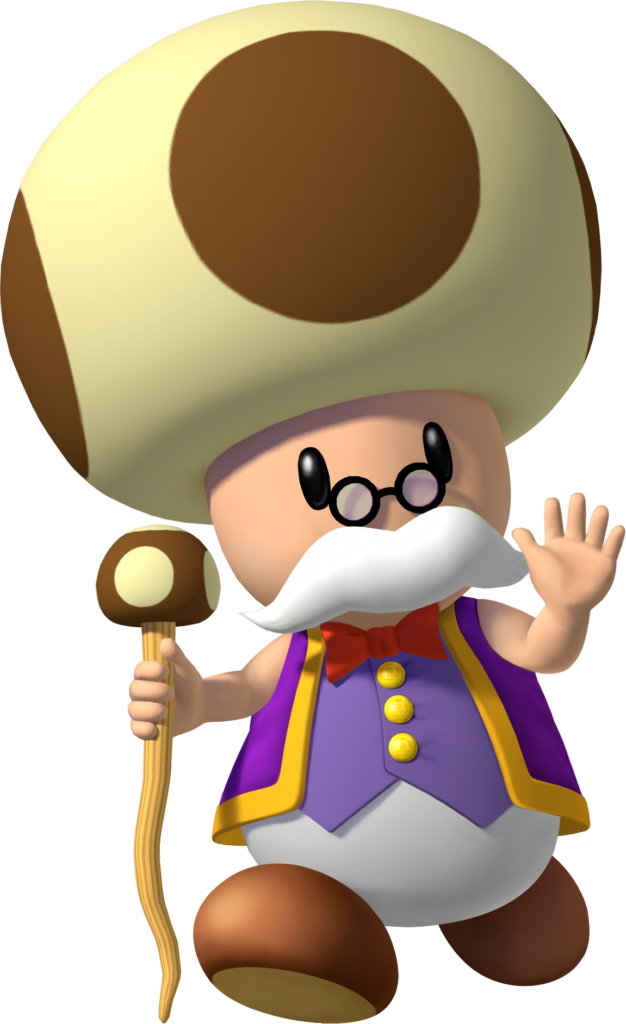
Another Nintendo post. The company’s tight-lippedness, which has intensified since the days of Iwata Asks, lends itself to fan speculation about nearly everything, and part of that everything is whatever happened to Peach’s minister, Toadsworth. In Japanese he’s キノじい, Kinojii, which I think implies he’s second in rank behind Peach in the Mushroom Kingdom hierarchy. Or was.
Toadsworth was introduced as a third in the vacation party, with Mario and Peach, in Super Mario Sunshine, likely as a kind of chaperone to make sure it wasn’t Peach and Mario taking a personal trip together, which I’m sure would have been a scandal in the fungal broadsheets, their ruler traveling alone with a swarthy Italian. The kooparazzi would be all over it.
Throughout the Gamecube era, Toadsworth was a prominent element of Mario lore, racking up appearances in many games. He was in Paper Mario: The Thousand-Year Door, Mario Kart DoubleDash, several Mario sports, and especially in the Mario & Luigi games, which fleshed out the character more than any other source.
Piantapedia on Youtube made an 11-minute video exploring Toadsworth’s history. It contains the information that Toadsworth was explicitly removed from the Super Mario Bros. Movie, replaced with a character known as Toad General, which is as good a sign as any that Nintendo is purposely not providing the character any more exposure, except perhaps in remakes like the one of Thousand-Year Door.
Isn’t it odd? Nintendo, when given opportunities to expand upon Mario lore, whenever they take a strong stab at it, often walks it back to the baseline of the original Super Mario Bros. They seem reluctant to meaningfully develop the Mario universe. Sometimes this happens in immediately consecutive games: remember how Super Mario Galaxy 2 abandoned nearly everything from the first Super Mario Galaxy, pretending it didn’t exist, when presenting its story?
The fact that TYD wasn’t rewritten to remove Toadsworth indicates the character isn’t poisonous to Nintendo, necessarily, but neither do they seem interested in giving him any more exposure. For shame! Who knows what Peach and Mario might get up to behind closed doors without Kinojii to watch over things?
